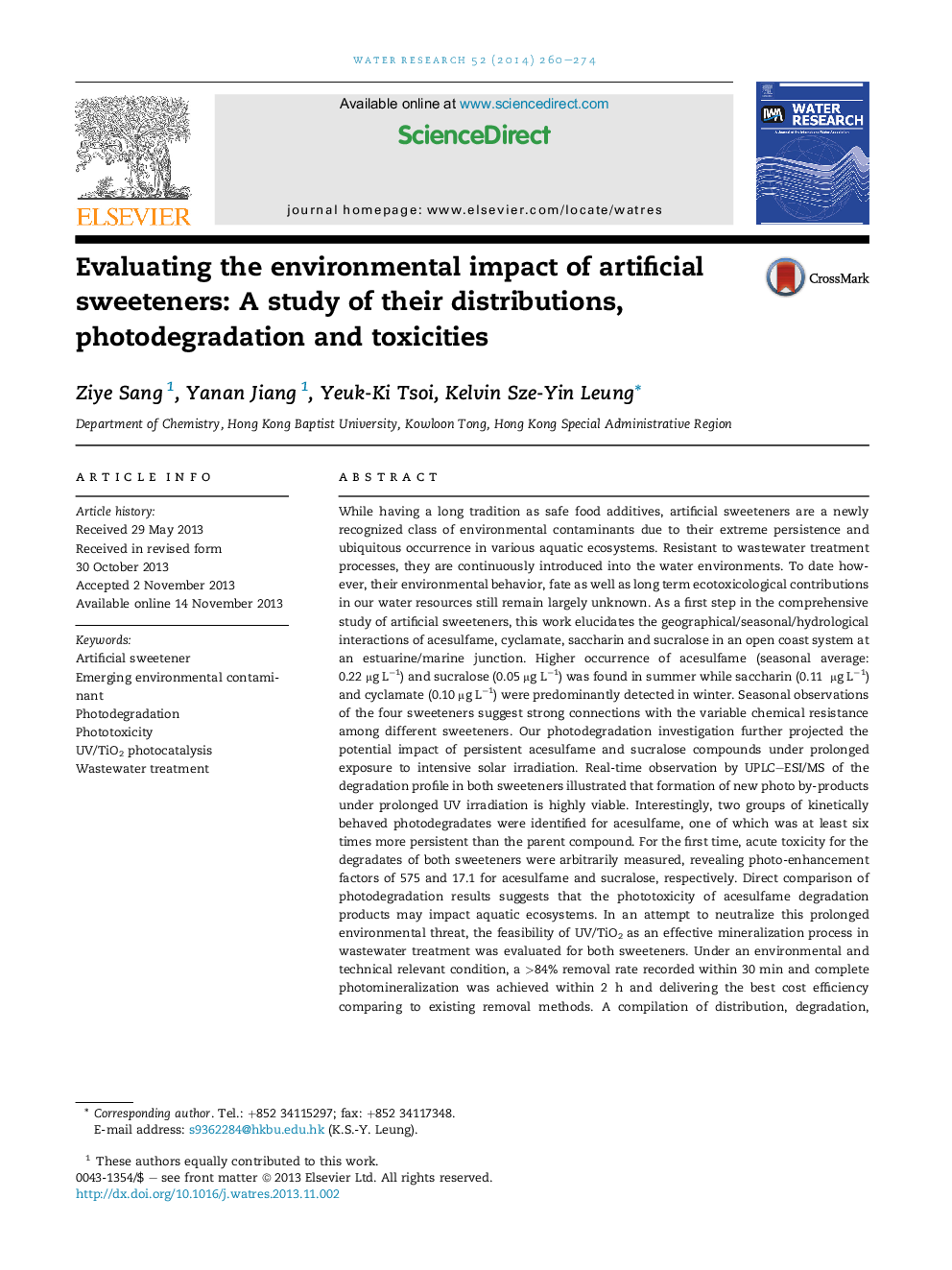| کد مقاله | کد نشریه | سال انتشار | مقاله انگلیسی | نسخه تمام متن |
|---|---|---|---|---|
| 4481681 | 1623116 | 2014 | 15 صفحه PDF | دانلود رایگان |
• An original report on the seasonal occurrence in an open estuarine/marine system.
• Data reveals strong links to seasonal hydrology and the persistence of sweeteners.
• Photodegradation profiles firstly compared between the most persistent compounds.
• Even stronger persistence and higher toxicity were accounted in photo by-products.
• UV/TiO2 treatment showed feasibility in mineralization for wastewater operation.
While having a long tradition as safe food additives, artificial sweeteners are a newly recognized class of environmental contaminants due to their extreme persistence and ubiquitous occurrence in various aquatic ecosystems. Resistant to wastewater treatment processes, they are continuously introduced into the water environments. To date however, their environmental behavior, fate as well as long term ecotoxicological contributions in our water resources still remain largely unknown. As a first step in the comprehensive study of artificial sweeteners, this work elucidates the geographical/seasonal/hydrological interactions of acesulfame, cyclamate, saccharin and sucralose in an open coast system at an estuarine/marine junction. Higher occurrence of acesulfame (seasonal average: 0.22 μg L−1) and sucralose (0.05 μg L−1) was found in summer while saccharin (0.11 μg L−1) and cyclamate (0.10 μg L−1) were predominantly detected in winter. Seasonal observations of the four sweeteners suggest strong connections with the variable chemical resistance among different sweeteners. Our photodegradation investigation further projected the potential impact of persistent acesulfame and sucralose compounds under prolonged exposure to intensive solar irradiation. Real-time observation by UPLC–ESI/MS of the degradation profile in both sweeteners illustrated that formation of new photo by-products under prolonged UV irradiation is highly viable. Interestingly, two groups of kinetically behaved photodegradates were identified for acesulfame, one of which was at least six times more persistent than the parent compound. For the first time, acute toxicity for the degradates of both sweeteners were arbitrarily measured, revealing photo-enhancement factors of 575 and 17.1 for acesulfame and sucralose, respectively. Direct comparison of photodegradation results suggests that the phototoxicity of acesulfame degradation products may impact aquatic ecosystems. In an attempt to neutralize this prolonged environmental threat, the feasibility of UV/TiO2 as an effective mineralization process in wastewater treatment was evaluated for both sweeteners. Under an environmental and technical relevant condition, a >84% removal rate recorded within 30 min and complete photomineralization was achieved within 2 h and delivering the best cost efficiency comparing to existing removal methods. A compilation of distribution, degradation, toxicity and attenuation results presented in this paper will go through critical discussions to explore some current issues and to pinpoint solutions for a better control in the emergent contamination of artificial sweeteners.
Figure optionsDownload high-quality image (295 K)Download as PowerPoint slide
Journal: Water Research - Volume 52, 1 April 2014, Pages 260–274
